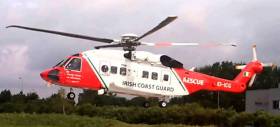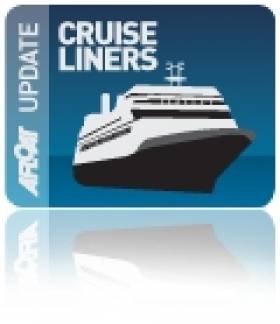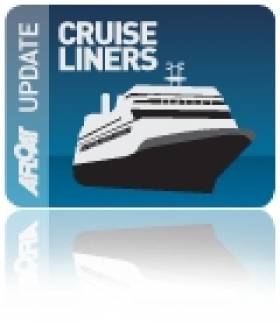Displaying items by tag: MV Marco Polo
Long-Range Medevac For Sligo Coastguard Helicopter From Cruise Liner ‘Marco Polo’
#Coastguard - The Sligo-based Irish Coast Guard helicopter Rescue 118 conducted a medevac for a passenger on board the cruise liner Marco Polo this morning (Wednesday 27 September).
Malin Rescue Coordination Centre received an early morning request from the UK Maritime and Coastguard Agency (MCA), who requested the Irish Coast Guard to assume coordination of the operation.
The rendezvous with the ship took place around 190 miles west of Erris Head shortly before 8.30am. Rescue 118 was expected to arrive with the casualty at University Hospital Galway before midday.
An Air Corps Casa maritime patrol aircraft was made available to provide communications and surveillance back up, known as ‘top cover’ but had to be redeployed to conduct two separate patient transfers to UK on foot of a request from the National Ambulance Service. This role was reassigned to the Dublin-based coastguard helicopter Rescue 116.
Weather conditions at the time were described as reasonable.
Bantry Bay's Double Role on Display
#CRUISE LINERS – Cruise & Maritime Voyages Marco Polo (1965/22,080grt) anchored off scenic Glengariff today and also sharing Bantry Bay is the tanker Amundsen Spirit (2010/109,290dwt), writes Jehan Ashmore.
The 800-passenger Marco Polo had sailed from Cork and the veteran vessel by coincidence has a deck named Amundsen Deck (etc).
The authority responsible for shipping traffic is Bantry Bay Harbour Commissioners, where the seasonality of the cruise callers visiting West Cork is offset by the year-round business of tankers.
Large tankers can be handled in the deep waters off the Bantry Bay Terminal on Whiddy Island. However the terminal has no jetty facilities, instead tankers use the single-point mooring (SPM) a buoy that is anchored offshore. This system also performs in unloading cargo that is transferred through pipes feeding into the tank farm located on the island.
The tugs Ocean Bank and Trojan were attending the Amundsen Spirit (249m long X 44m beam X 14.6m draft), noting at the bow she a structure to facilitate the SPM operations.
Cruise Caller Line-Up for Galway Harbour
#CRUISE LINERS- Galway Harbour can look forward to welcoming nine cruise calls to the mid-west port this year, with the first visitor being Arion which is scheduled to arrive in Galway Bay during late May, writes Jehan Ashmore.
Arion harks back to an era of the more classically designed ships with graceful sweeping lines. The 5,888 tonnes veteran vessel was launched in 1965 at Pula, in Croatia, as Istra and later in her career she underwent a major reconstruction in a Lisbon shipyard during 2000.
Cruise & Maritime Voyages (CMV) will be sending their Marco Polo, another classic veteran, in July as part of a 12 night 'Emerald Isle' discovery cruise departing Tilbury, with en-route calls to Cobh and Glengariff the previous day.
For a full listing of the cruise-calls schedule click HERE.































































